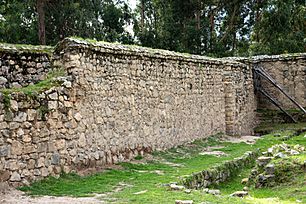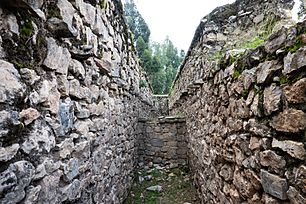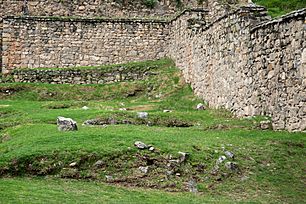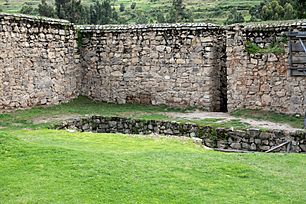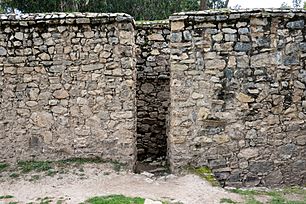Wari Willka facts for kids
 |
|
| Location | Huancan District, Huancayo Province, Junín Region, Peru |
|---|---|
| Region | Andes |
| Coordinates | 12°7′3″S 75°12′22″W / 12.11750°S 75.20611°W |
Wari Willka, also spelled Wariwillka, is an important archaeological site in Peru. It is found in the Junín Region, specifically in the Huancayo Province, within the Huancan District. This ancient place tells us about the people who lived in the Andes mountains long ago.
Contents
What is Wari Willka?
Wari Willka is a special place where scientists called archaeologists find clues about past civilizations. It's like a giant puzzle left behind by people who lived thousands of years ago. These clues help us understand their daily lives, beliefs, and how they built their communities.
Location and Importance
The site is located in the beautiful Andes mountains of Peru. This area was home to many ancient cultures. Wari Willka was likely a very important center for the Wari people. They were a powerful civilization that existed before the Inca Empire.
Who were the Wari people?
The Wari civilization was a major culture in the Andes from about 600 to 1000 AD. They built large cities and a network of roads. They were skilled at farming, making pottery, and weaving textiles. Wari Willka might have been a religious or administrative center for them.
Exploring the Site
When you visit an archaeological site like Wari Willka, you can see the remains of old buildings. These might include temples, homes, or other structures. Archaeologists carefully dig here to uncover artifacts. These are objects like tools, pottery, or jewelry.
What can we learn from Wari Willka?
By studying Wari Willka, archaeologists learn about the Wari people's way of life. They find out what they ate, what gods they worshipped, and how they organized their society. Every piece of pottery or stone wall tells a part of their story. It helps us connect with history.
Protecting Ancient Sites
Places like Wari Willka are very fragile. It's important to protect them so future generations can also learn from them. Archaeologists work hard to preserve these sites. They make sure they are not damaged by weather or human activity.
Gallery
See also
 In Spanish: Huarihuilca para niños
In Spanish: Huarihuilca para niños


